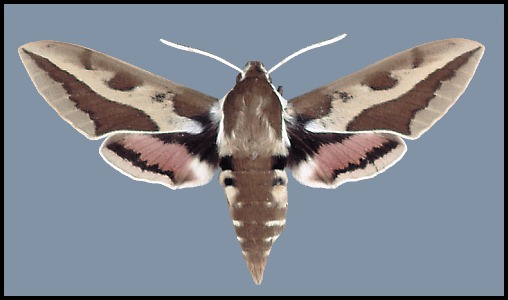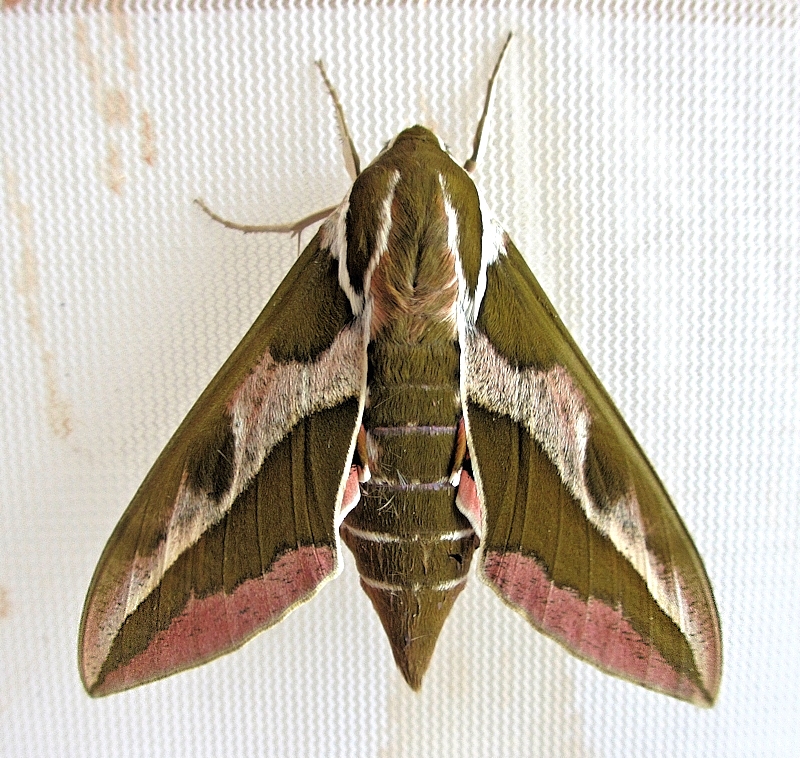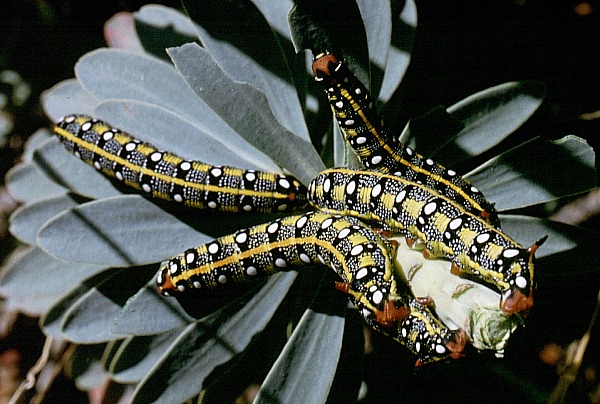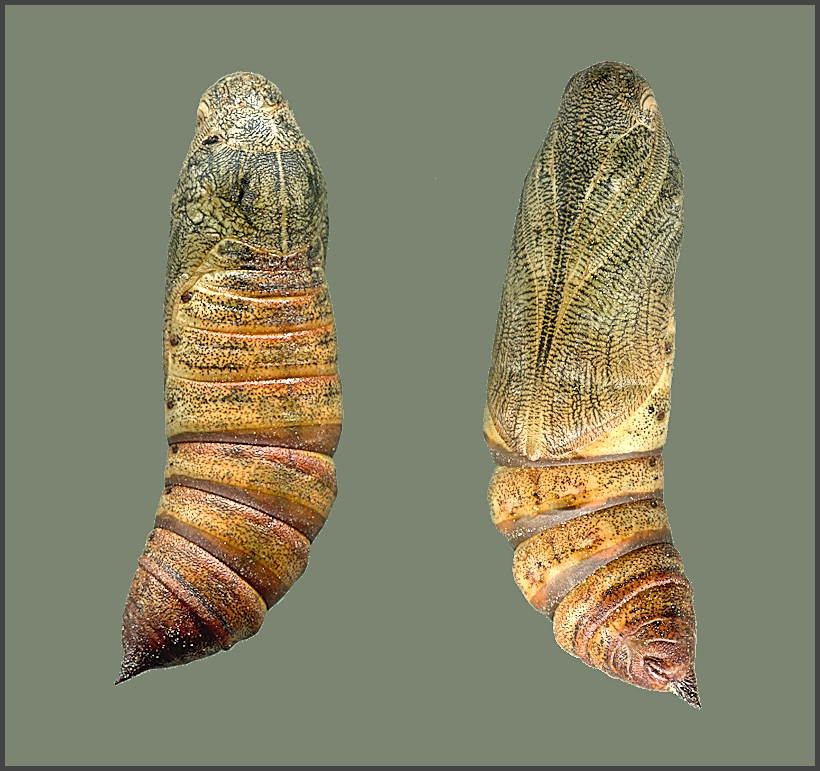UK: Barbary Spurge Hawkmoth, F: Sphinx du Tithymale
Deilephila mauretanica Staudinger, 1871, in Staudinger & Wocke, Cat. Lepid. eur. Faunengeb.: 36.Type locality: Mauritania [Morocco and Algeria].
(Taxonomic note. de Freina (1994) placed mauretanica as a subspecies of Hyles euphorbiae (Linnaeus, 1758) on the basis of minor morphological and behavioural differences, overlooking the many more characteristics that mauretanica has in common with Hyles tithymali (Boisduval, 1834).)
[Further details on this species, as well as photos of all stages, can be found on AfroMoths.]
Holarctic; western Palaearctic region. Pleistocene refuge: Monocentric -- Afroeremic refuge as part of a mauretanica/deserticola complex.

Wingspan: 60--85mm. Highly variable, often resembling the nominate subspecies but tending to become smaller and paler towards desert areas.

Frequents dry, rocky slopes and, in more open areas, dry, sandy river-beds with a good supply of Euphorbia.
Trivoltine; April/May, June/July and August/September.
OVUM: Identical to that of Hyles euphorbiae.
LARVA: Full-fed, 70--80mm. Examination of a large number of full-fed larvae, both in the wild and preserved in the Natural History Museum, London, clearly shows a relationship between this subspecies and subsp. tithymali (Boisduval, 1834) and subsp. deserticola (Staudinger, 1901). In fact, many larvae are almost identical to those of these subspecies; however, the colours tend to be less bright. Oddly, in some immature larvae the eye-spots are pure white (not red-centred), slightly larger than in the other two subspecies, and set in a slightly larger black surround, just like in Hyles euphorbiae. These stay large and white in such larvae, right through to maturity.

In a year with good rainfall, larvae can be very abundant from April to October. Intolerant of temperatures in excess of 36°C (de Freina, 1994).
Hostplants. Herbaceous Euphorbia spp., especially Euphorbia paralias, Euphorbia terracina, Euphorbia characias, Euphorbia pinifolia and Euphorbia nicaeensis (Rungs, 1981).
PUPA: Morphologically indistinguishable from that of Hyles euphorbiae. Overwinters as a pupa.

Restricted to the mountains and northern lowlands of northwest Africa, from Morocco (Oberthür, 1916; Rungs, 1981; Speidel & Hassler, 1989) to Tunisia (Pittaway, 1983b), including Spanish North Africa, e.g. Melilla (Gastón & Vives Moreno, 2023). In desert areas it merges with subsp. deserticola to form a cline (Oberthür, 1916).
Extra-limital range. None.
 Return to species list
Return to species list